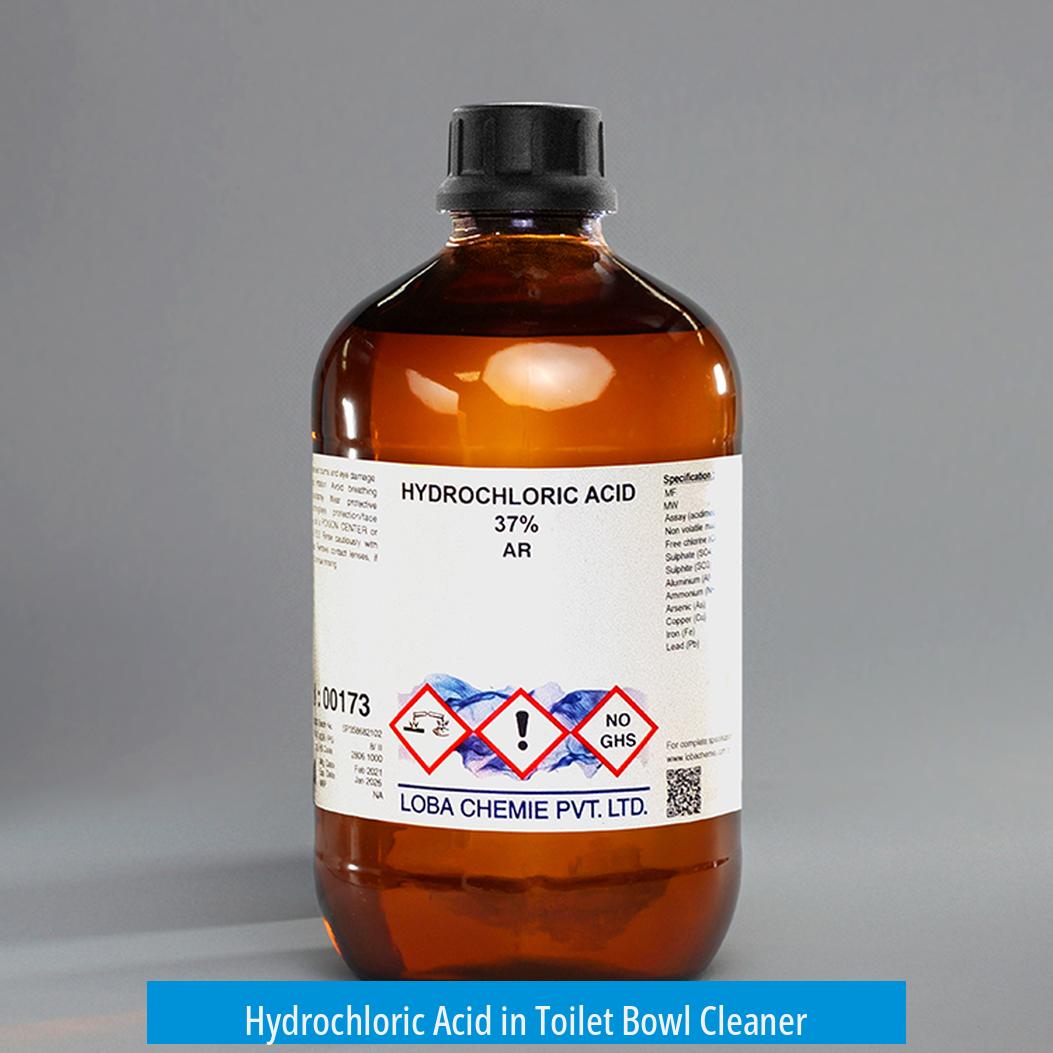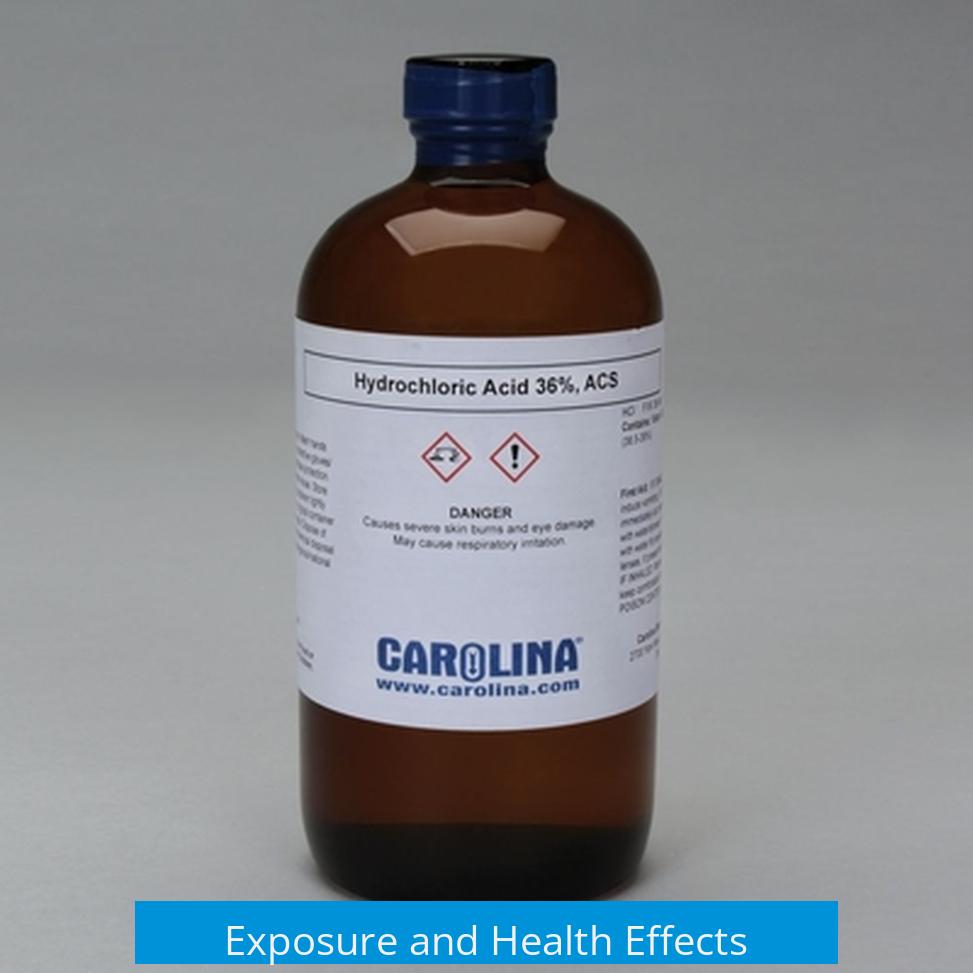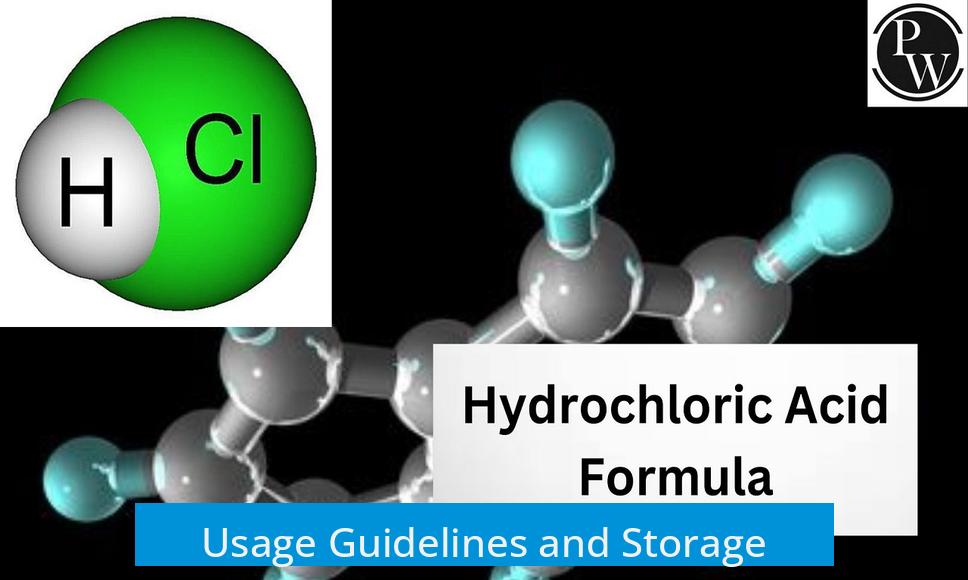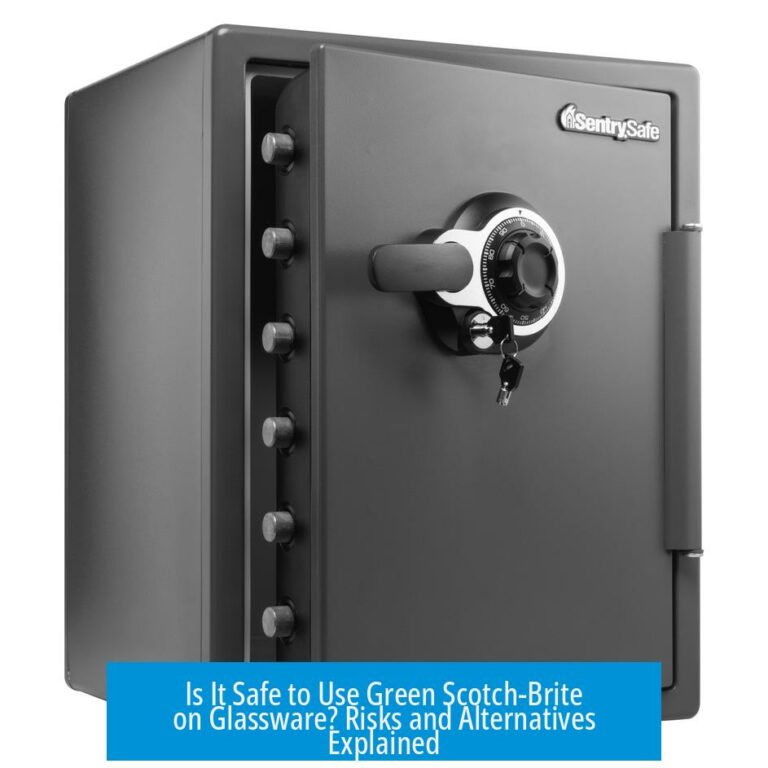Hydrochloric Acid in Toilet Bowl Cleaner

Hydrochloric acid (HCl) is commonly used in toilet bowl cleaners due to its effectiveness in removing tough stains and mineral deposits. It acts as a strong acid that dissolves limescale and organic matter. However, HCl in these products is typically at concentrations below 30% to balance cleaning power and safety.
Exposure and Health Effects

Hydrochloric acid fumes are highly irritating to the respiratory system even at low levels. Inhalation causes a sharp, painful sensation in the nose and throat, making exposure immediately noticeable. Due to its corrosive nature, HCl rapidly damages skin and mucous membranes upon contact rather than causing systemic toxicity.
- Gloves provide adequate hand protection. Washing hands after use is essential.
- Eye protection, such as goggles or safety glasses, is recommended to prevent severe damage.
- HCl is not classified as toxic, carcinogenic, mutagenic, or harmful during pregnancy.
Usage Guidelines and Storage

Household toilet cleaners generally contain hydrochloric acid at concentrations well below 30%. Concentrations above this threshold increase risks significantly and should be avoided. Proper ventilation is advised to reduce inhalation of fumes.
Metal fixtures can corrode if exposed frequently. Acid contact strips protective coatings, leading to rust and stains, particularly on faucets and drains. Great care should be taken to avoid prolonged contact with metal parts.
Safety Data and Precautions

| Hazard Statements | Precautionary Measures |
|---|---|
|
|
Summary of Key Points
- Hydrochloric acid cleans effectively by dissolving deposits, usually below 30% concentration in household products.
- Exposure causes acute irritation to skin, eyes, and airways but no systemic toxicity or pregnancy risk.
- Use gloves and eye protection; work in ventilated areas to minimize respiratory irritation.
- Avoid contact with metal to prevent corrosion and damage to plumbing fixtures.
- Follow Safety Data Sheet guidelines on storage, handling, and emergency measures.
Hydrochloric Acid in Toilet Bowl Cleaner: What You Need to Know
Hydrochloric acid (HCl) in toilet bowl cleaners is a powerful but common ingredient that works wonders against tough stains. However, it’s also a chemical that demands respect and care during use. Simply put, it cleans like a champ but can hurt if mishandled. Let’s dive into the facts and bust some myths, so you can handle it like a pro—and keep your porcelain throne sparkling safely.
Why Is Hydrochloric Acid Used in Toilet Bowl Cleaners?
Toilet bowl stains can be stubborn. Calcium deposits, rust, and biofilm love hanging out under the rim and inside the bowl. Hydrochloric acid is a strong inorganic acid effective in dissolving these mineral buildups quickly. This means fewer scrubs and less elbow grease.
Household toilet cleaners typically use concentrations below 30%. Anything higher is too harsh and unnecessary for home use. The usual formula balances cleaning power with safety considerations—because while HCl is great at breaking grime, it’s also corrosive.
How Hydrochloric Acid Works and Why It Can Hurt You
Exposure to hydrochloric acid triggers immediate reactions. It’s an acute irritant, meaning it burns skin, mucous membranes, and eyes on contact. If you accidentally inhale the fumes—even in small amounts—you’ll notice a sharp, stinging pain in your nose. As one experienced user puts it, “HCl fumes really hurt your nose even in very small amounts.”
Thankfully, this reaction is an advantage: the acid doesn’t sneak silently through your body but delivers quick signals to stop exposure. This acute effect means you recognize danger fast.
Safety Tips: Gloves Are Good, But Don’t Forget Your Eyes
If you choose to clean with hydrochloric acid-based products, gloves are your best friend. Almost all kinds of gloves guard well against HCl, protecting your skin from chemical burns. Just be sure you wash your hands after removing the gloves.
Eye protection is even more critical. Mist or splash in your eyes can cause severe damage. Safety glasses or goggles are strongly recommended whenever handling these cleaners. No one wants a trip to the ER to fix eye injuries.
What About Pregnancy? Is Hydrochloric Acid Safe?
Good news here: hydrochloric acid isn’t labeled as toxic, carcinogenic, mutagenic, or harmful during pregnancy or breastfeeding. It’s simply corrosive. That means if you accidentally get some on your skin or inhale a small amount, the main risk is irritation rather than systemic toxicity.
Still, better safe than sorry—use well-ventilated areas and do not expose yourself unnecessarily. Remember, irritation can be uncomfortable, even if it’s not dangerous for your baby.
Avoid Metal Damage—Protect Your Faucets and Plumbing
One lesser-known fact is HCl’s ability to corrode metal. Frequent use around sinks and faucets may slowly eat away their protective coatings. Brown stains or rust patches are common complaints from those who apply these cleaners around metal fixtures.
If you notice discoloration or stains on your fixtures, consider limiting exposure. Alternatively, use mild acid cleaners designed specifically to be metal-safe—or switch to a less corrosive cleaning agent for those areas.
Understanding the Safety Data Sheet (SDS) for About 32% HCl
| Hazard Statements | Precautionary Advice |
|---|---|
|
|
These guidelines may sound like overkill, but they’re designed to keep you safe. It’s always better to take precautions seriously than to suffer painful burns or respiratory problems.
Practical Use Tips to Handle Hydrochloric Acid Safely
- Check Concentration: Avoid products with over 30% HCl for home use.
- Ventilate: Open windows or use fans to keep air moving.
- Wear Protection: Gloves, goggles, and avoid loose clothing.
- Apply Carefully: Pour or spray carefully to minimize splashes.
- Rinse Thoroughly: After cleaning, flush surfaces well with water.
- Store Properly: Keep the original packaging tightly closed, away from children and pets.
Is There a Safer Substitute?
Yes! If you find hydrochloric acid too harsh, consider alternatives like vinegar, baking soda, or enzymatic cleaners for light stains. They are gentler but may require more elbow grease.
For heavy-duty cleaning, hydrochloric acid still reigns supreme—but use it knowingly and safely.
Final Thoughts: Respect the Acid, Reap the Rewards
Hydrochloric acid in toilet bowl cleaners offers impressive cleaning power. It tackles tough stains and mineral buildup like few other agents can. However, that power comes with responsibility. Using protective gloves, goggles, and good ventilation transforms a dangerous chemical into a helpful household ally.
Have you ever faced the brave challenge of scrubbing with hydrochloric acid? Did you notice the sharp sting if a splash hit your nose? Share your stories or your safety hacks!
Remember, cleaning is a chore, but that doesn’t mean it has to be dangerous. With the right knowledge, hydrochloric acid can keep your toilet sparkling while keeping you safe—and that sounds like a win-win.
What happens if you inhale hydrochloric acid fumes from toilet bowl cleaner?
Even a small amount of hydrochloric acid fumes causes sharp pain in the nose. Inhalation sensitivity is high, so you would notice exposure immediately.
Is hydrochloric acid harmful during pregnancy?
Hydrochloric acid is not considered a risk when pregnant. It is corrosive but has no known toxic or harmful effects on pregnancy.
Why should I avoid using toilet bowl cleaners with HCl concentration above 30%?
Household cleaners usually contain less than 30% HCl. Higher concentrations increase corrosion risks and harm surfaces or skin.
How can hydrochloric acid damage metal parts in sinks?
HCl can strip coatings on metal faucets, causing brown stains. Avoid prolonged contact with metal when cleaning.
What safety gear should I use when handling toilet bowl cleaners with hydrochloric acid?
Wear gloves and eye protection like goggles. Use products in well-ventilated areas to avoid respiratory irritation.
What should I do if hydrochloric acid contacts my skin or eyes?
Rinse skin immediately with water and remove contaminated clothing. For eyes, rinse cautiously for several minutes and remove contact lenses if easy.





Leave a Comment